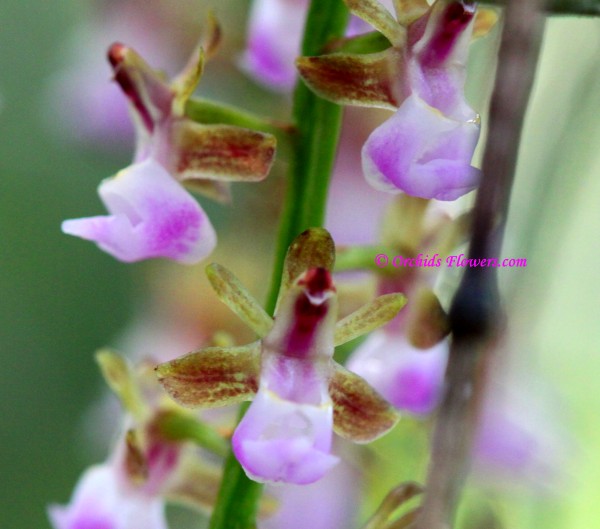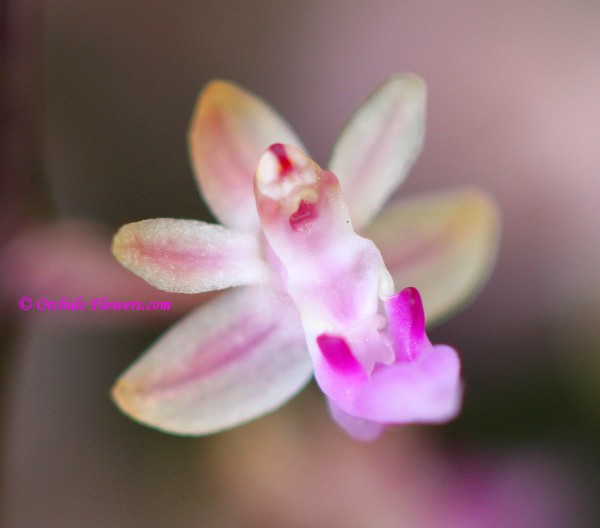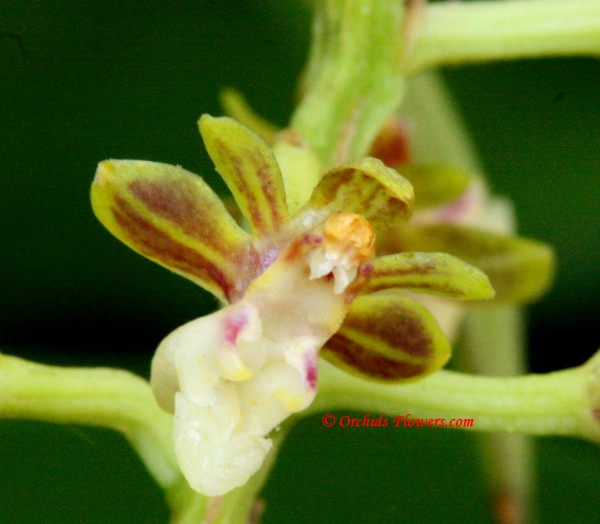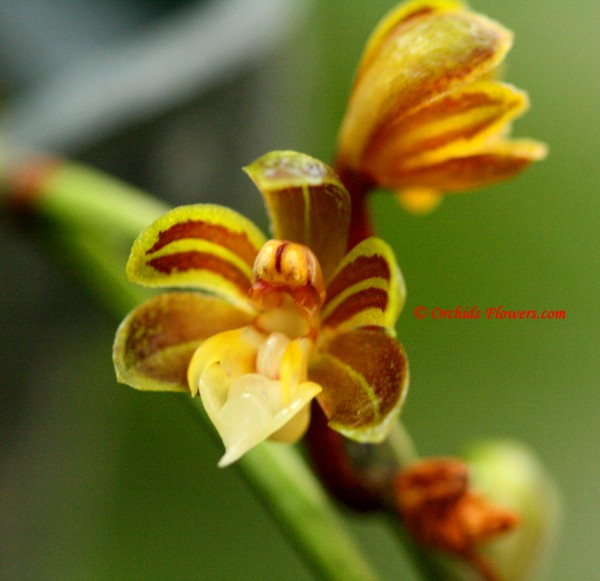
The Cleisostoma rolfeanum (King & Pantl.) Garay 1972 orchid species,
native to Burma (Myanmar) and the North of Thailand,
has been named in honour to the English Botanist Robert Allen Rolfe…
{ 0 comments }
Cleisostoma is an orchid genus with about 100 different, small flowered species. The Cleisostoma genus has been established by German-Dutch botanist Karl Ludwig Blume
in the year 1825.
The epiphytic growing Cleisostoma orchids are widely spread over Asia,
especially Southeast Asia and as far as Australia.
The abbreviation in horticultural trade is: Cleis.

The Cleisostoma rolfeanum (King & Pantl.) Garay 1972 orchid species,
native to Burma (Myanmar) and the North of Thailand,
has been named in honour to the English Botanist Robert Allen Rolfe…
{ 0 comments }

The miniature orchid Cleisostoma arietinum (Rchb. f.) Garay 1972 has been primarily classified by the German botanist Heinrich Gustav Reichenbach as Sarcanthus arietinus Rchb.f. 1869. The American botanist and orchid specialist Leslie Andrew Garay (born 1924) has reclassified the beautiful, small flowered orchid as Cleisostoma arietinum in 1972. The epiphytic growing Cleisostoma arietinum orchid species Read More »
{ 0 comments }

Cleisostoma duplicilobum (J.J. Sm.) Garay 1972 is an epiphytic growing orchid species native to Sri Lanka, India, Myanmar (formerly Burma), Thailand, Laos, Vietnam, Malaysia and Indonesia. Inflorescences get lengths up to about 30 cm and are packed with up to 25 small flowers. The beautiful, but very small flowers get a size of just about Read More »
{ 0 comments }

Cleisostoma birmanicum (Schltr.) Garay 1972 is a small epiphytic growing orchid species, native to Thailand, Myanmar (formerly Burma), China (Hainan) and Vietnam. In 1922 the German botanist Rudolf Schlechter classified this orchid species as Echioglossum birmanicum, in the year 1972 the tropical plant has been revisted by Leslie A. Garay, an American botanist, as …
{ 0 comments }